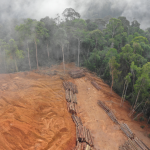About DRSRS
The Directorate of Resource Surveys and Remote Sensing (DRSRS), formerly known as Kenya Rangeland Ecological Monitoring Unit (KREMU), was established in 1976 as a response to environmental concerns raised in 1972 Stockholm Conference which created the United Nations Environmental Programme (UNEP) with funding from the Kenya Government and Canadian International Development Agency (CIDA). Its main function was to monitor the condition and trend of Kenya rangelands through livestock, wildlife, and vegetation surveys using remote sensing, aerial surveys and ground sampling techniques. In 1982, the Kenya Government and World Bank funded a nationwide land-use/land-cover mapping in the high potential areas while the French Government financed forest cover mapping using SPOT Satellite.
The Directorate's activities include livestock and wildlife aerial census, species habitat mapping, landslide risk mapping, forest cover mapping, crop forecasting mainly maize and wheat yield forecasting, land use land cover mapping, land degradation assessment and mapping, biodiversity surveys and mapping of urban land use. The scope of the Directorate's activities has increased tremendously through collaborations with different governmental and non-governmental organizations.The Directorate's activities include livestock and wildlife aerial census, species habitat mapping, landslide risk mapping, forest cover mapping, crop forecasting mainly maize and wheat yield forecasting, land use land cover mapping, land degradation assessment and mapping, biodiversity surveys and mapping of urban land use. The scope of the Directorate's activities has increased tremendously through collaborations with different governmental and non-governmental organizations.
DRSRS has accumulated a vast amount of data and information over the years in the form of maps, statistics, and reports. This unique wealth can/is used to offer spatial solutions in different areas among them housing, transportation, agriculture, the environment, natural resource management, disaster preparedness and mitigation and urban planning. The data and information are disseminated through the directorate’s Geoportal and publications.
The Directorate comprises highly skilled personnel, including Geographic Information Systems (GIS) and remote sensing experts, software engineers and natural resource scientists, as well as cutting-edge surveying equipment including airborne LiDAR scanner and caravan planes.

